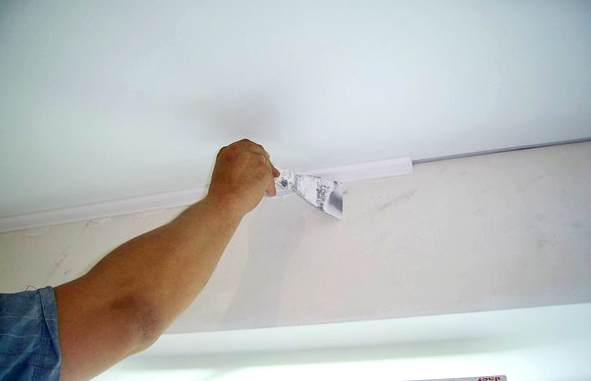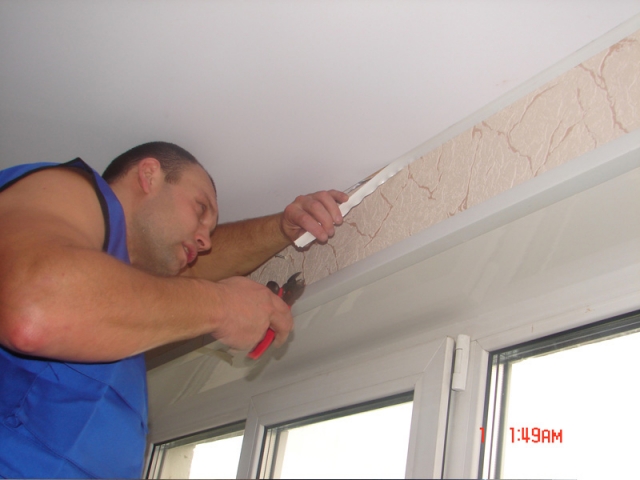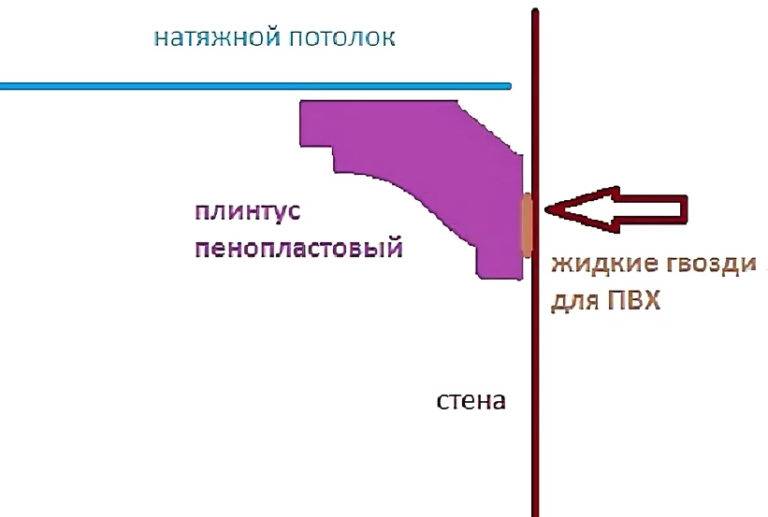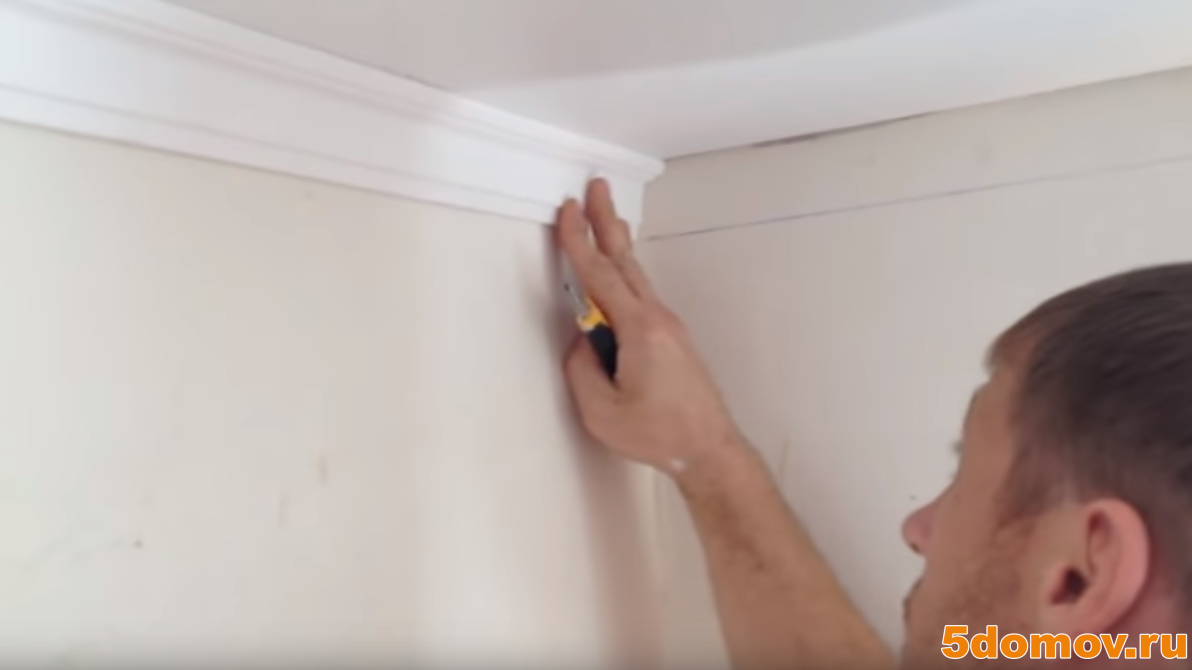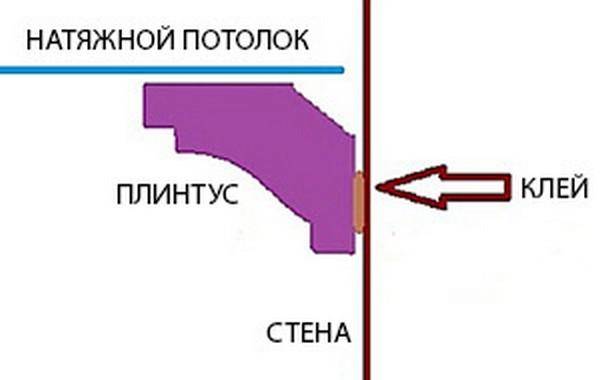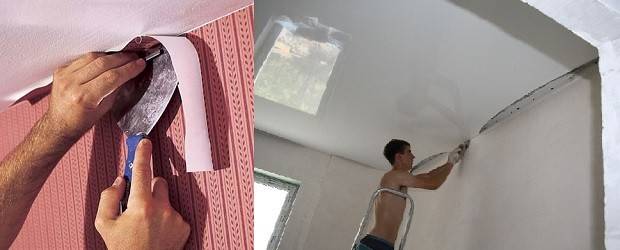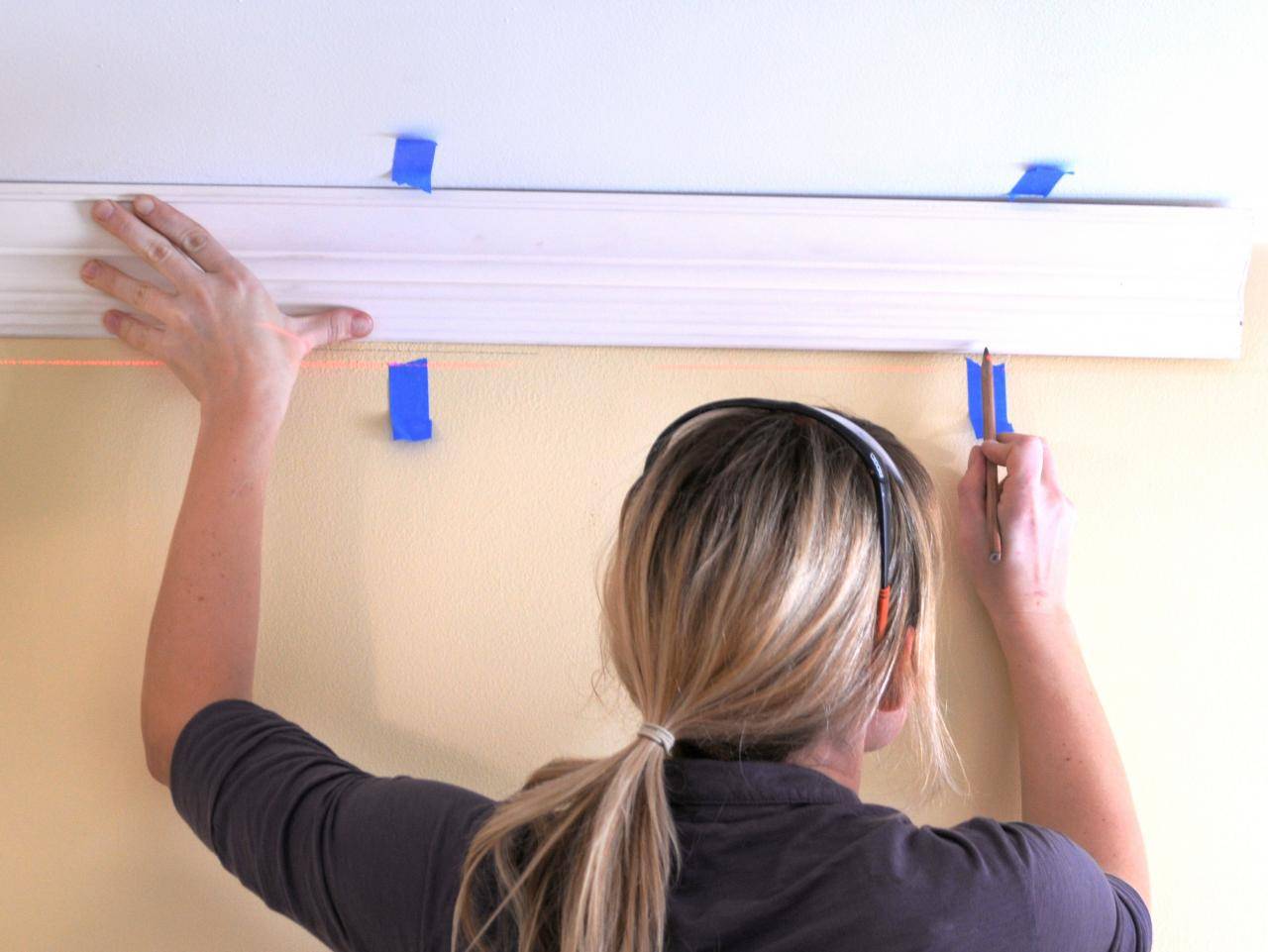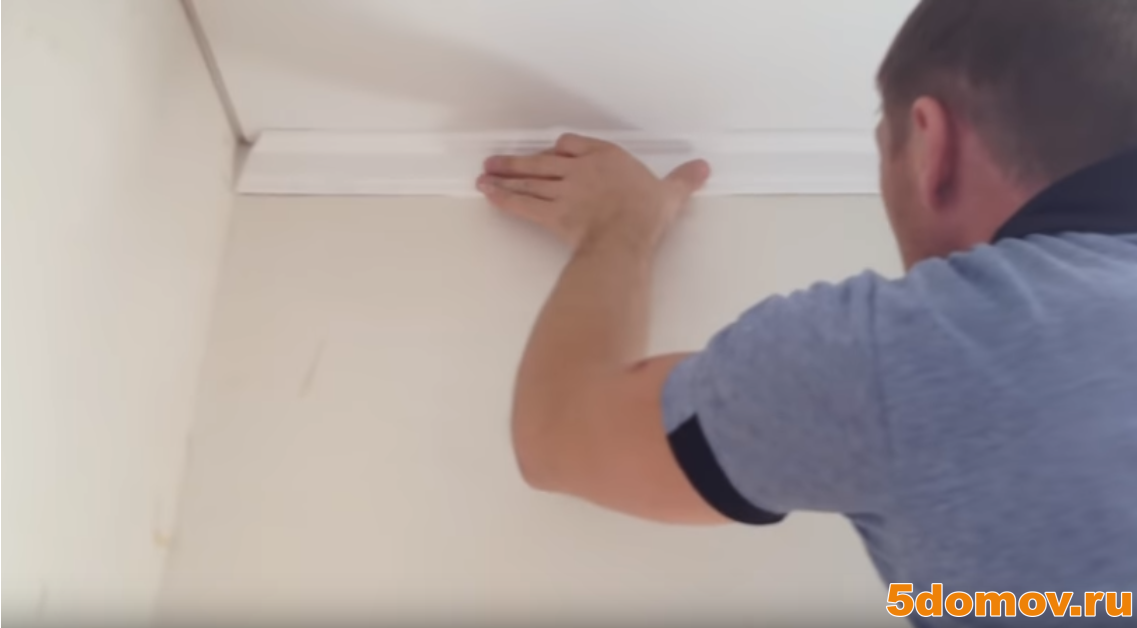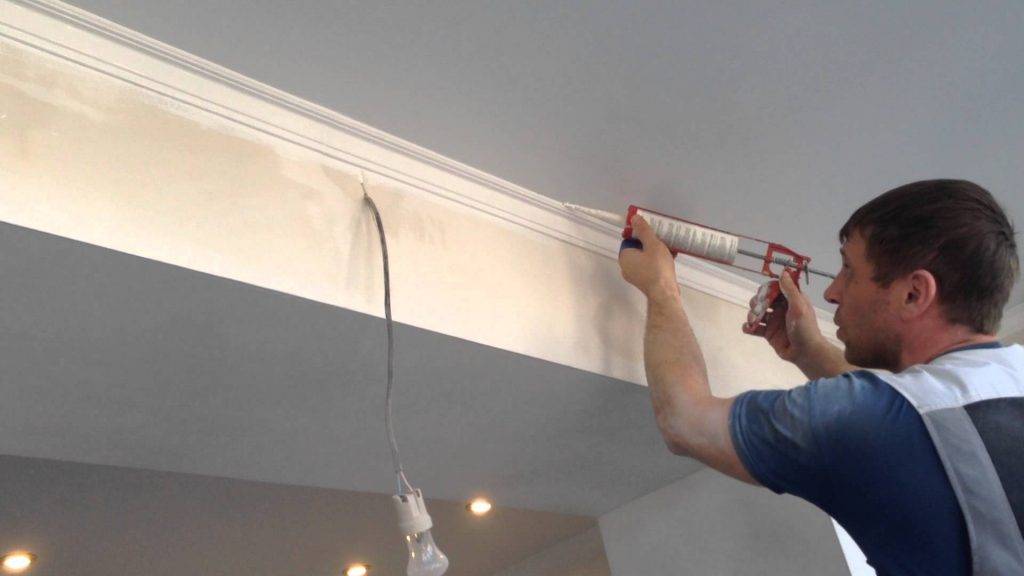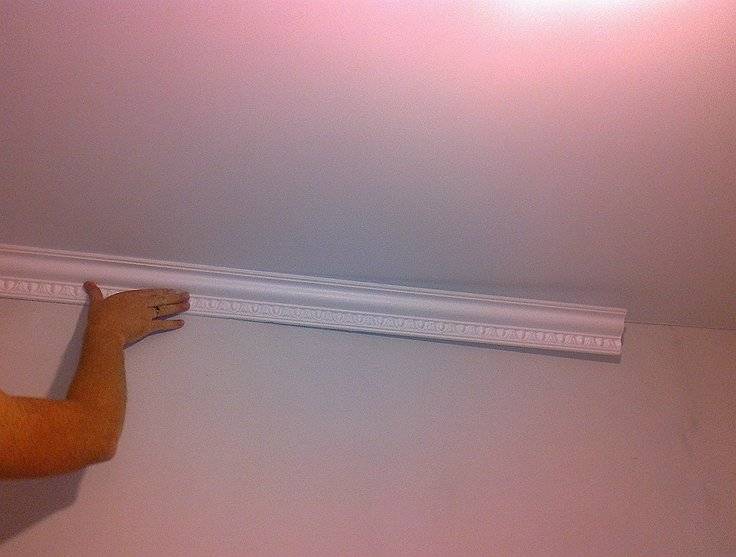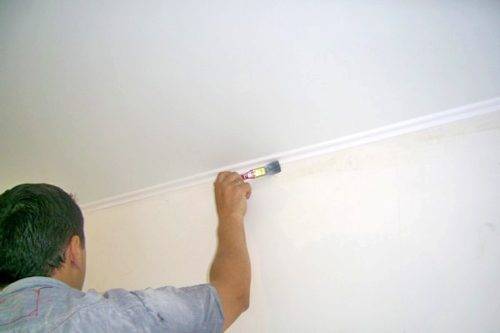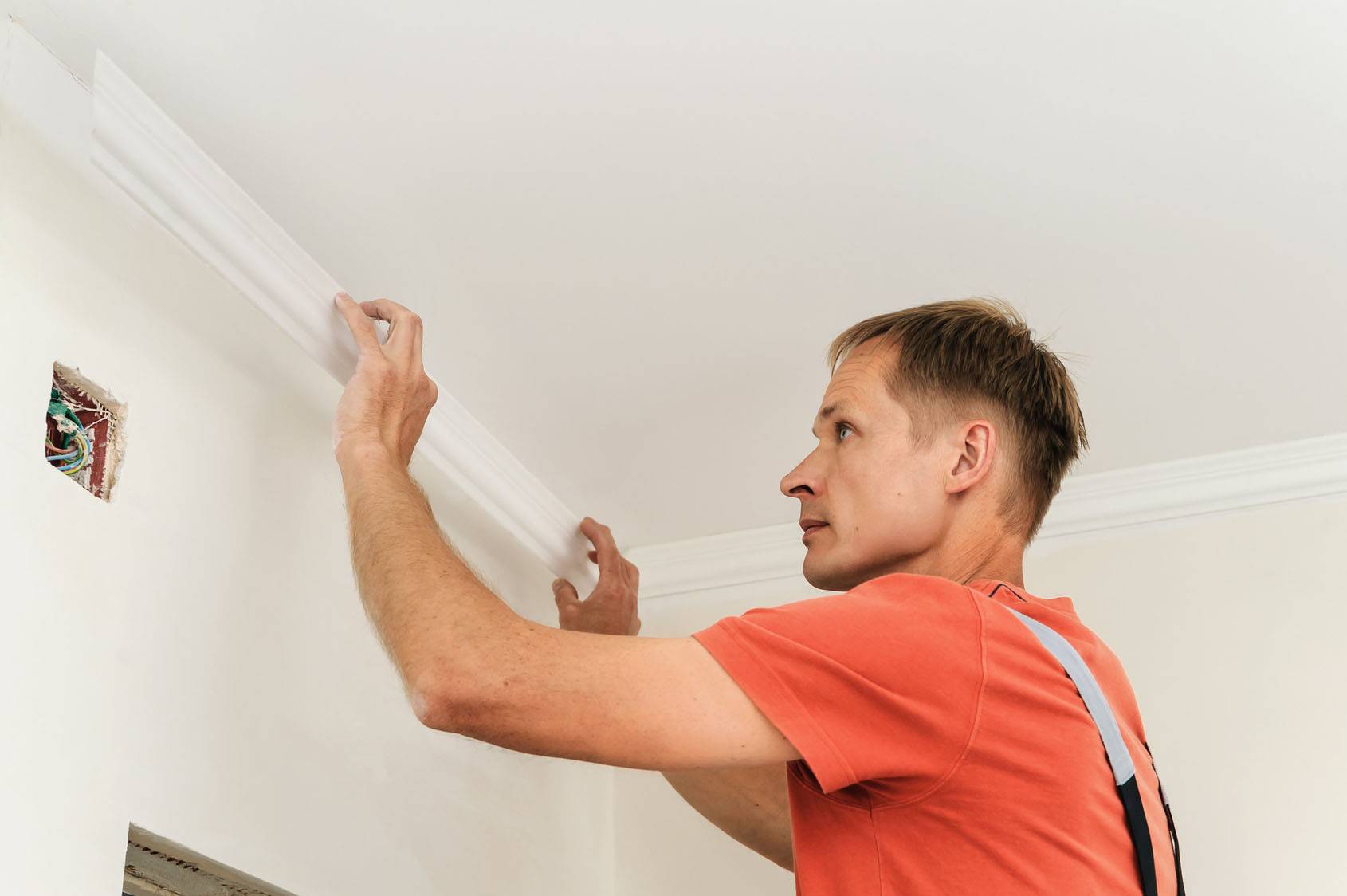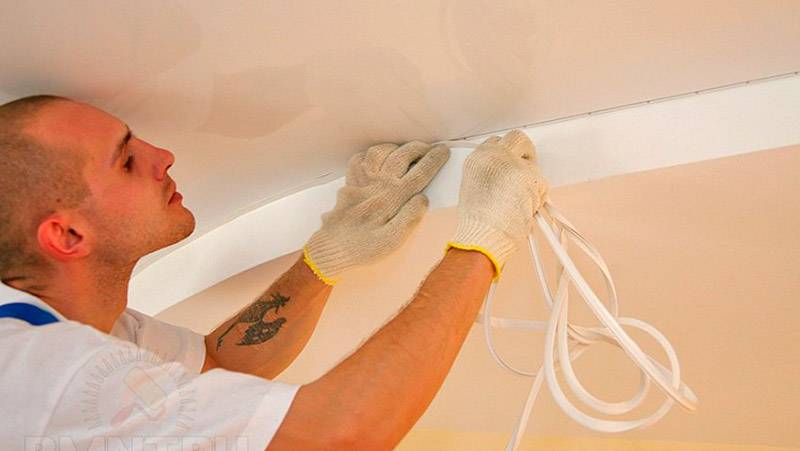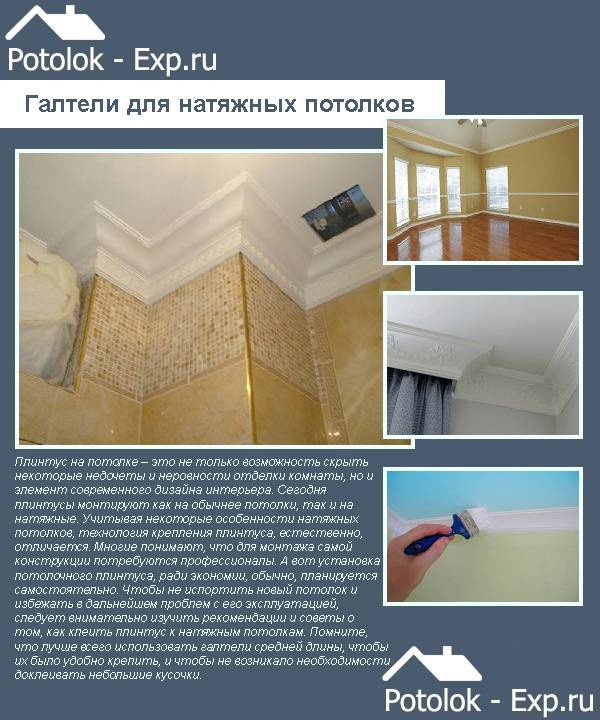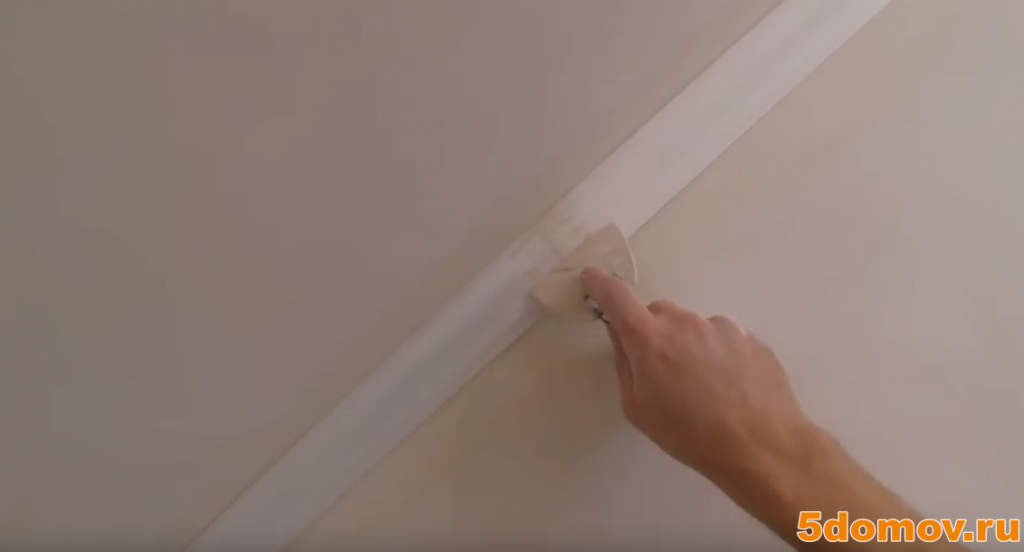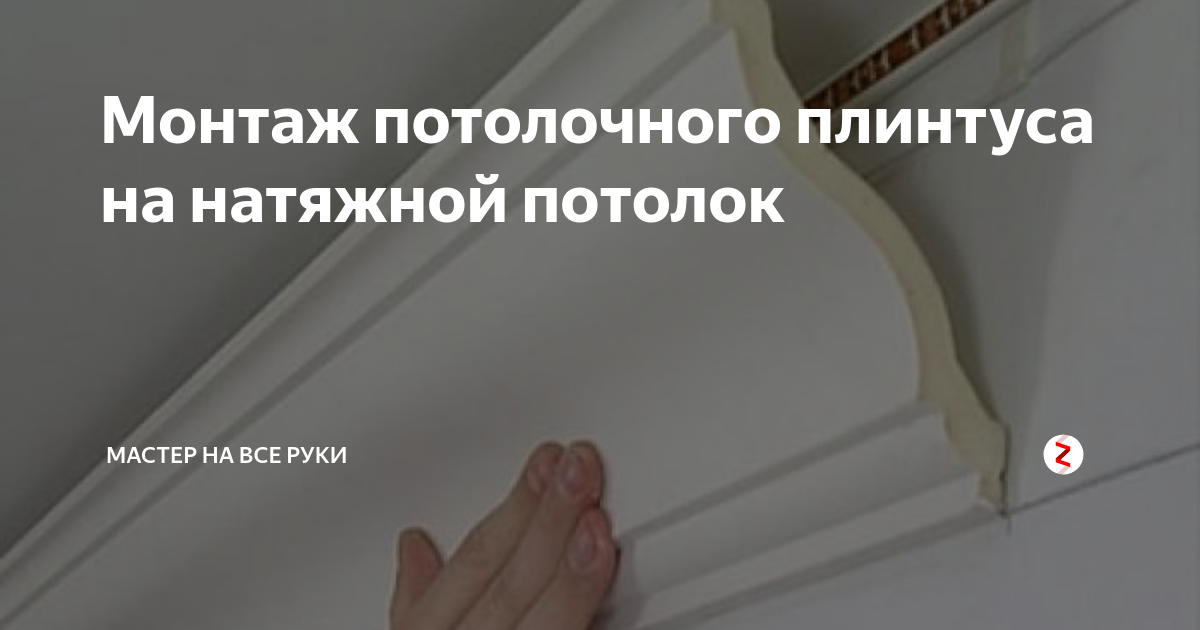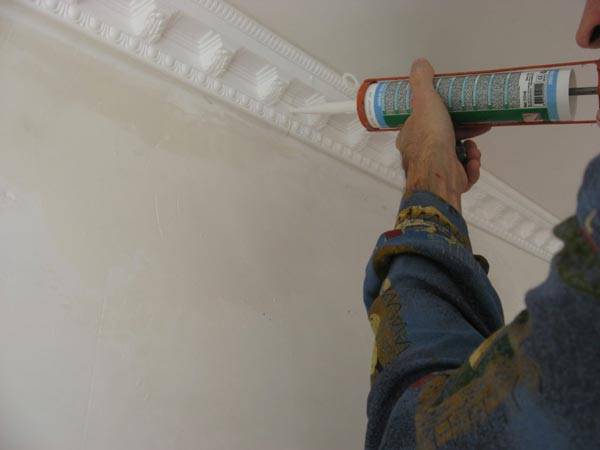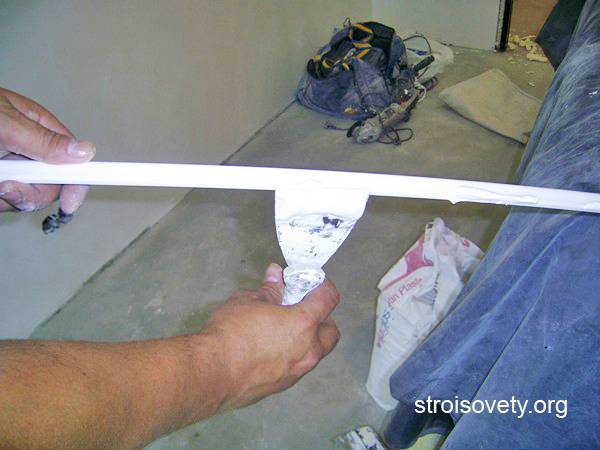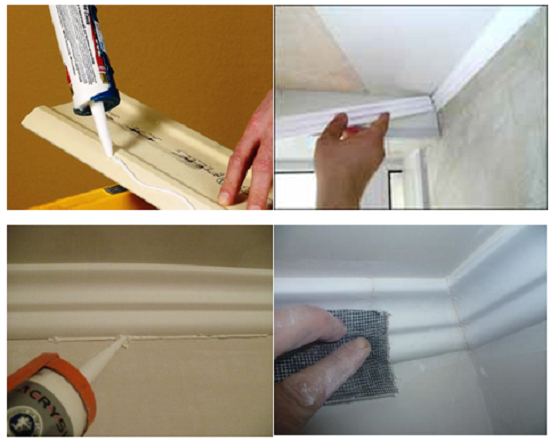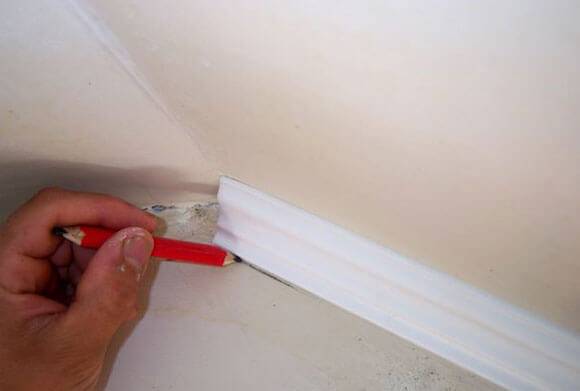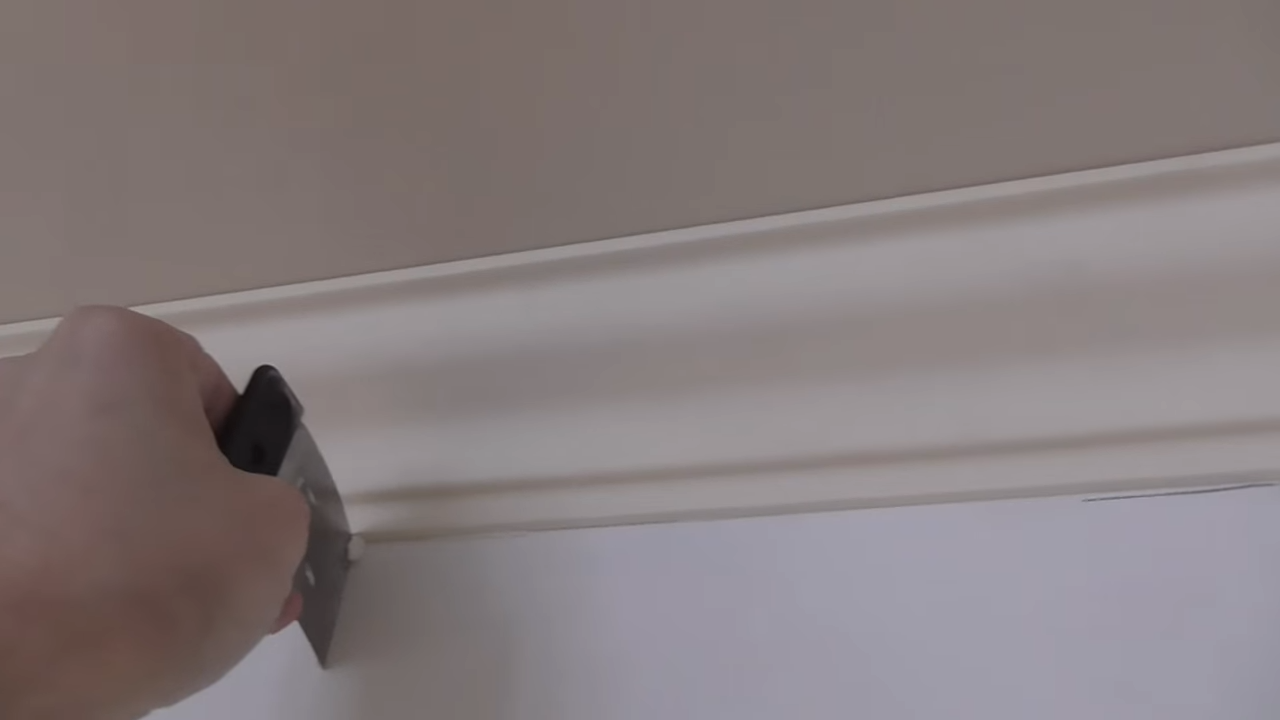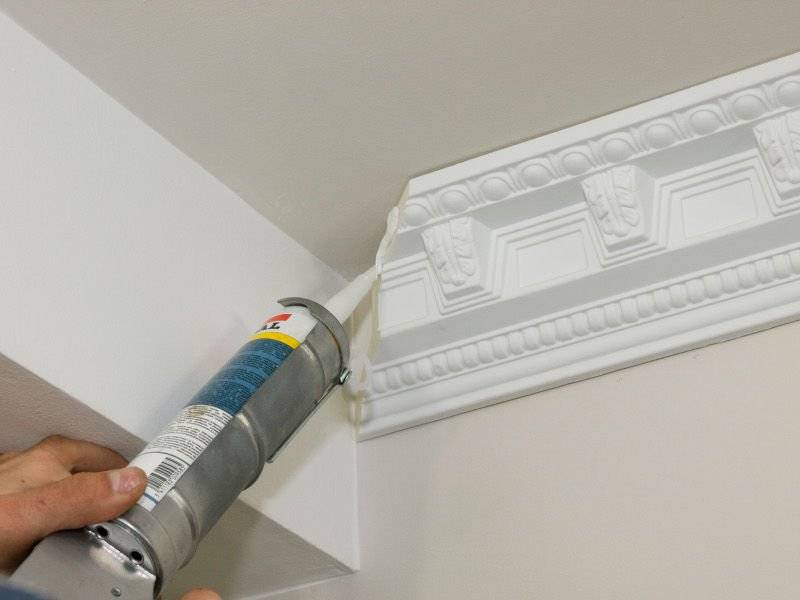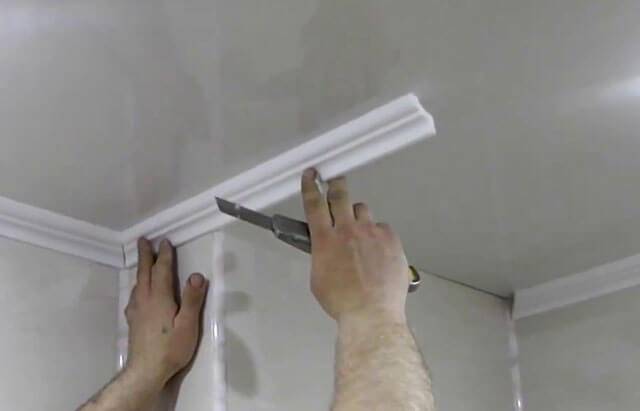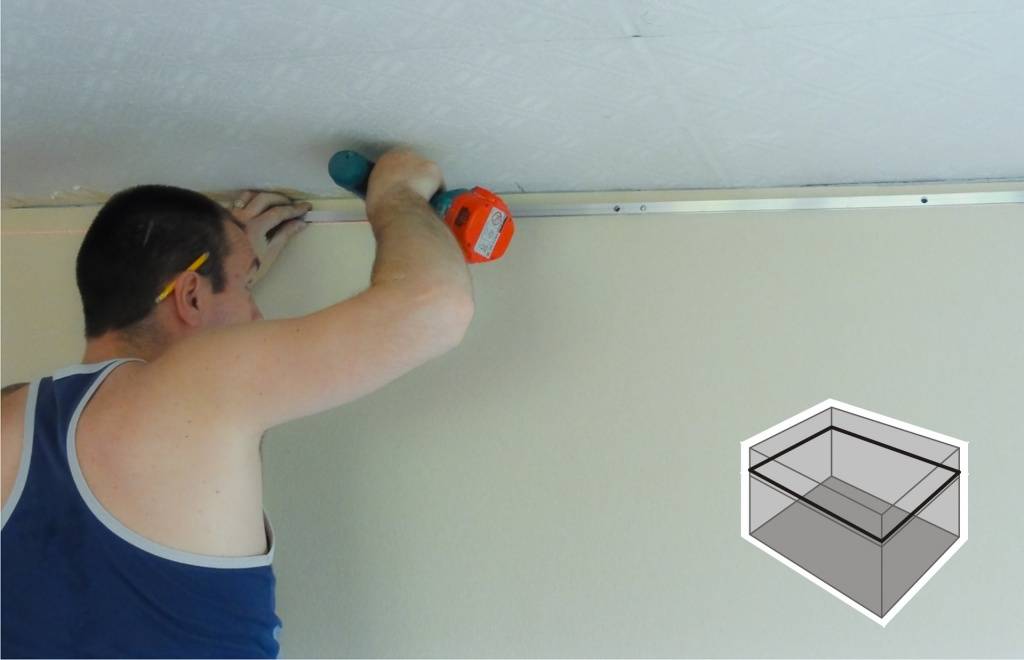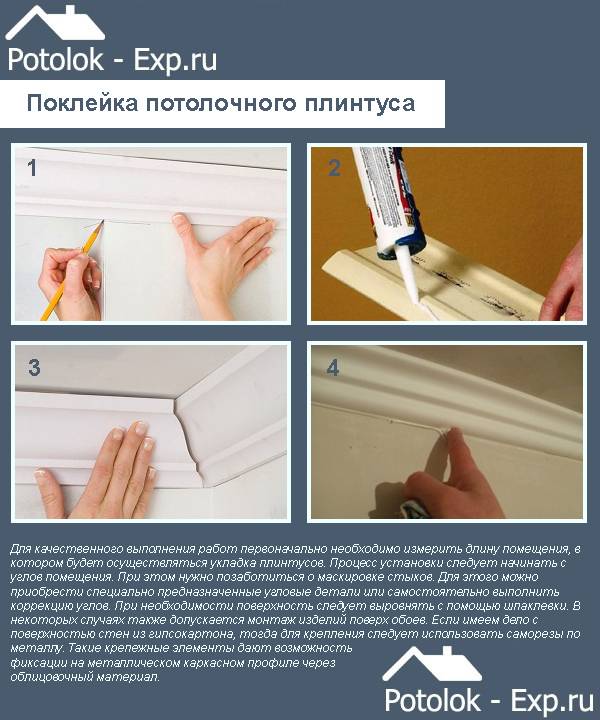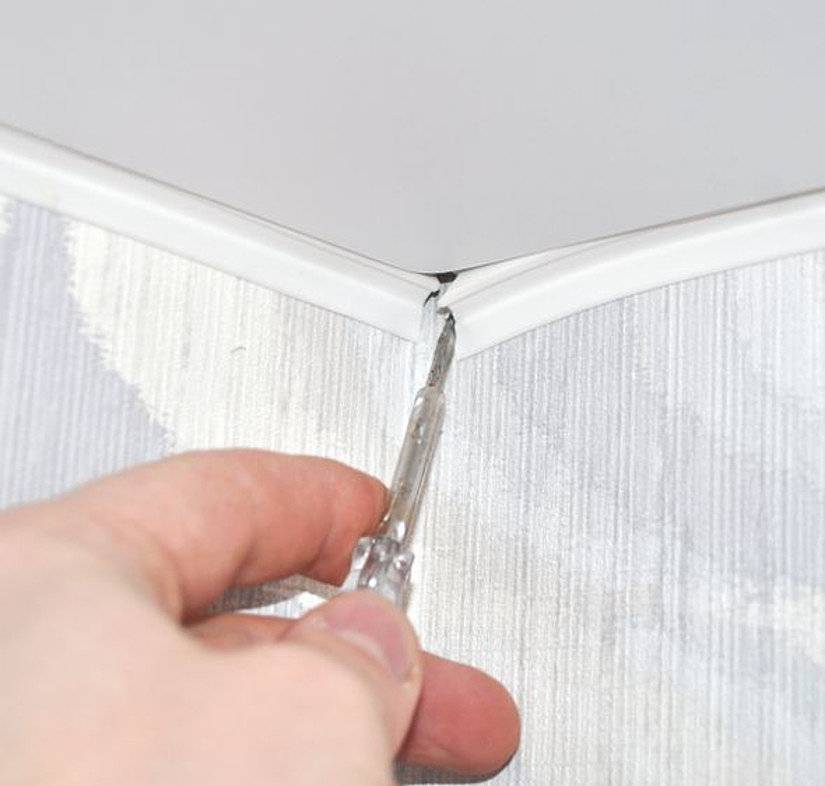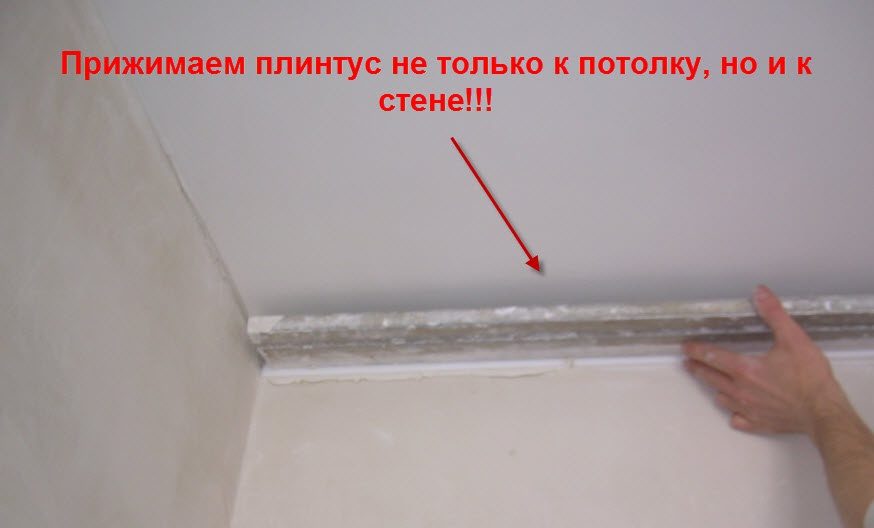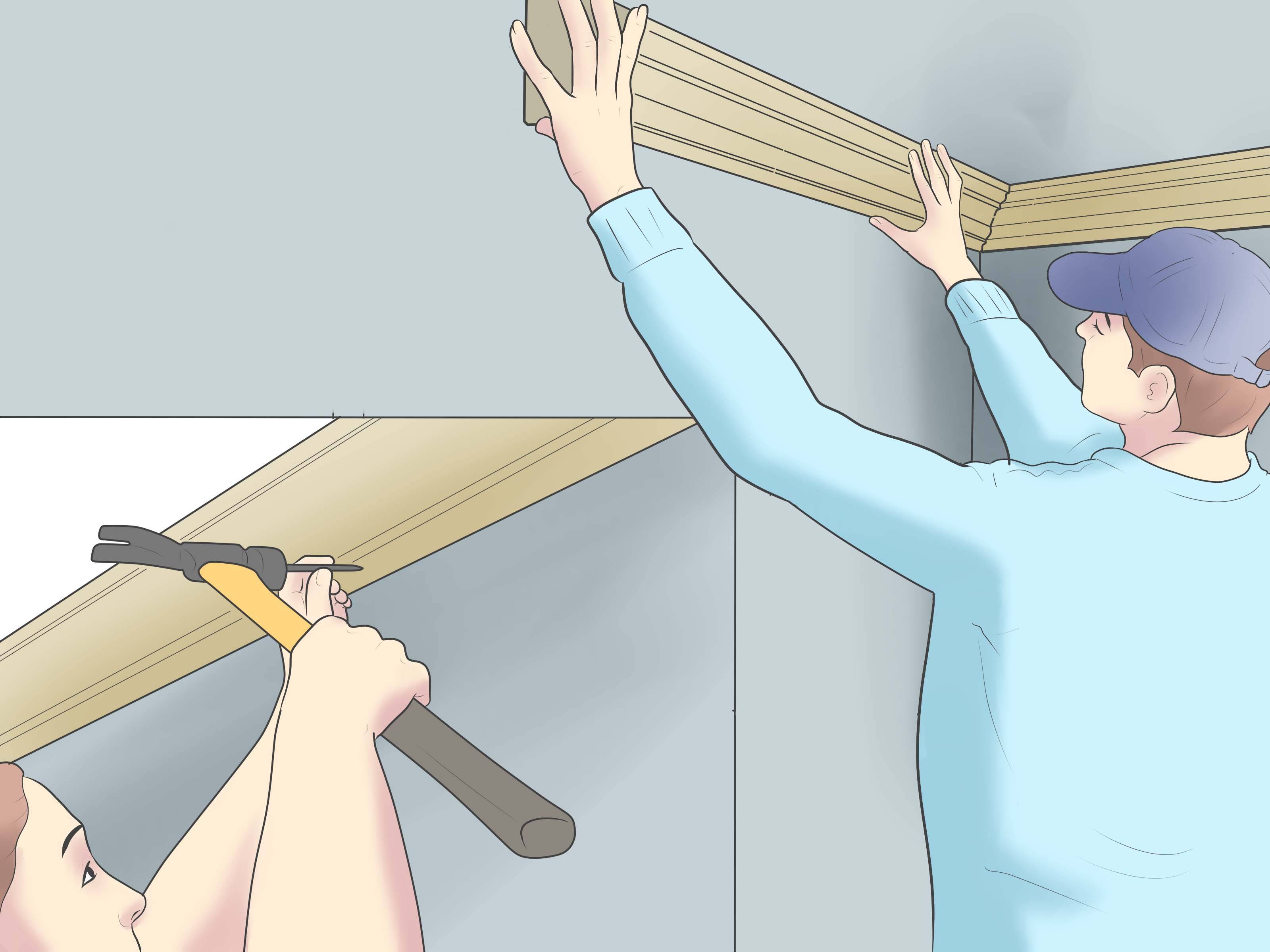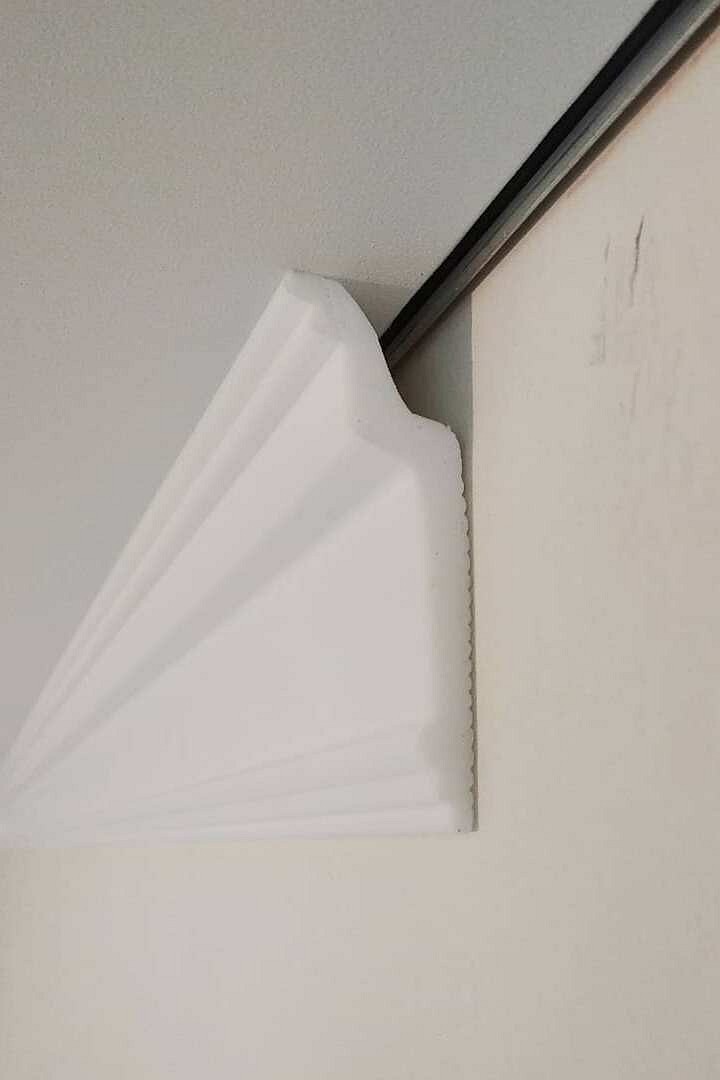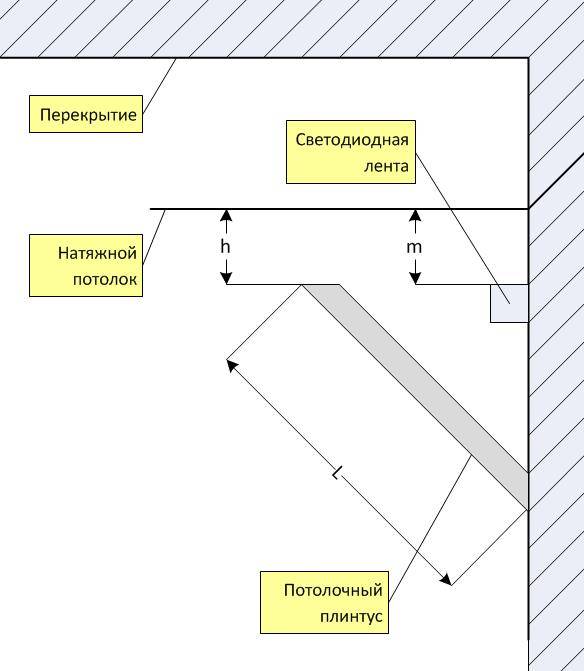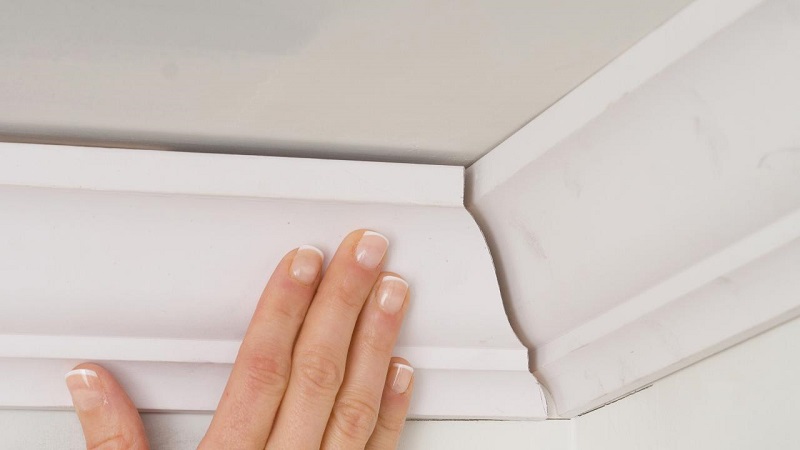Dimensions (edit)
Skirting boards come in different sizes, differing in length, width and type of surface. Usually they are matched to the general style and interior of the room. Sometimes the choice of a plinth depends on the size of the joint that has formed between the ceiling and the wall.
Also, the choice of ceiling fillets depends on their purpose. If they should play an exclusively decorative role in the room, the walls are even, like the joint line, there is no need to hide any defects, then the skirting board can be replaced with molding. Otherwise, elements are used in which the side attached to the wall is wide enough. Thus, you can hide small errors of repair and docking places.
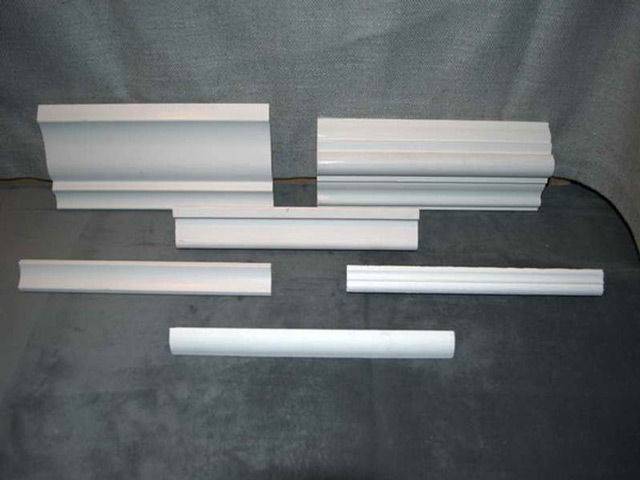
In terms of length, it is better to choose options that, during installation, will create as few joints as possible and a minimum of cuttings. Therefore, in order not to be mistaken with its length, before buying skirting boards, you need to know the exact dimensions of all walls. If the installation of such elements is carried out independently and for the first time, then it is better to buy a plinth with a margin, this will avoid the need to run to the store for additional material.
Some have difficulty cutting corners during the installation process. Therefore, in order to simplify the work, manufacturers offer to use ready-made corners, which only need to be glued between the straight lines of the skirting boards.
How to install a ceiling plinth on a stretch ceiling
It is worth noting that it is not easy to glue the skirting boards to the ceiling, but it is possible, and with your own hands and without the help of a specialist.
The skirting board must be applied strictly according to the technology in order to exclude:
- The formation of distortions of the material;
- Uneven edges and joints;
- The presence of flaws after installation.
After replacing the ceiling covering, it is necessary to make sure the markings along which the material will be applied. To do this, use a pencil or cord. If you pre-fix the wallpaper on the wall, and the plinth is not lightweight, then when marking the line of the location of the product, you need to make small cuts. To be more precise, the wallpaper will be removed over the incision.
There is a special insert in the inner and outer corners. For self-production of such a structure, a miter box is used, a special device with different levels of inclination. You need to fix the skirting board by spreading glue only along the end part, which will be applied to the wall surface. The opening between the ceiling and the product to be installed should be as small as possible. If necessary, you can increase the opening up to 2 cm, provided that lighting or other lighting devices will be subsequently mounted there.
It is necessary to carry out the installation extremely carefully, since it is theoretically possible to insert and remove the plinth, but this can cause the formation of glue drips on the wall, which will ruin the appearance not only of the canvases, but of the entire room. Products are installed sequentially around the room.
If the walls have irregularities, then in addition to pressing, you need to press, but so as not to push the plinth, and also wait for time so that the two coatings are fastened together. It is not uncommon to apply masking tape on top of the baseboard in order to fix it on the wall as tightly as possible. It must be removed immediately after complete drying. Masking tape is unique in that it does not leave traces, even the smallest ones, which means that the work will not be spoiled.
How to install before finishing finishing
The algorithm for installing the plinth before finishing the finish is significantly different from the usual one, and among the key points are:
- preparation of glue and putty;
- moistening the work surface;
- preparation of working solution based on putty;
- fillet sticker.

Preparation of glue and putty
The choice of gluing before finishing the finish implies two ways of implementation:
- with glue;
- with putty.
The use of glue is implemented in the same way as in the previous version, and you will need to tinker with the putty. It is necessary to achieve such a state of the solution, which will be slightly thicker than when processing the walls.
Moistening the surface
After the skirting board is fitted and ready for gluing, the surface of the wall is moistened for better adhesion of the putty. In addition to the wall, be sure to wet the inside of the skirting board itself.
Preparation of a putty-based working solution
Algorithm of actions required to prepare a working solution for working with a ceiling plinth:
- We take a mixing container.
- We fill it with water.
- Little by little we add the dry mixture to it until the solution becomes the consistency necessary for the work.
- We stir the mixture with a construction mixer for 2-3 minutes.
If the solution is made by hand, the mixture is poured first, after which we pour water.
How to glue fillets
When gluing the plinth, it is necessary to press it strongly against the wall so that part of the applied solution is squeezed out through the bottom, thereby filling in the irregularities in the wall. The excess solution is subsequently removed using a conventional spatula and a clean cloth.
Features of fixing the plinth to stretch ceilings
Installation of a plinth on a stretch ceiling always begins with preliminary measurements and preparation of the fillet (pieces of plinth). Remember that it is best to use fillets of medium length, so that they are convenient to attach, and so that there is no need to glue small pieces.
If, when installing the plinth on a regular ceiling, it is painted at the finishing stage, then in the case of a stretch ceiling, it is better to do this in advance. The condition is optional, but this way you will definitely not stain the new ceiling.
The main feature of the skirting board installation in our case is the method of fastening. Fillets are glued only to the wall. It is impossible to glue fillets to a stretch ceiling for a number of reasons:
- it is not tough enough;
- during operation, the ceiling can stretch;
- if it is necessary to dismantle the skirting board, you will damage the stretch ceiling covering.
Note also that it is undesirable to glue the skirting board on the wallpaper, they may simply not be able to withstand it. That is, the plinth is attached to the stretch ceiling before you glue the wallpaper.
Also, before starting the installation, it is recommended to make a markup using a chopping cord, for a more even attachment of the plinth.
The rest of the installation technology is standard. The skirting board starts from the corner. As a reminder, you can use special corner pieces for the corners of the rooms. If you could not find the corresponding skirting boards, then you can cut the fillets at an angle of 45 degrees and simply join them.
You can install the skirting board with both glue and putty. To protect the stretch ceiling, you can cover it with polyethylene, which is then very easy to remove. Glue or putty is applied only to that part of the fillet that will be pressed against the wall. Parts of the plinth should be brought closer to the ceiling so that the gap is small, but not pressed tightly. The joints between fillets must also be coated with glue or putty, for better fastening of the entire structure.
If the installation of the plinth was carried out by means of putty, all joints and gaps are immediately overwritten with it. If glue was used, then the gaps can be eliminated with a sealant or finishing putty. After complete drying, the skirting board needs to be tinted in the places that were putty.
When the plinth is completely ready, it is necessary to remove the polyethylene from the stretch ceiling.
Preparation of tools and calculation of materials
To work, you will need the following tools:
- Stepladder or sturdy, stable table.
- Roulette and pencil.
- Chopping cord.
- Stationery knife and miter box for trimming plinths in the corners.
- Dispensing gun or small metal spatula, depending on the adhesive used.
- Thin plastic or rubber spatula for filling joints and removing excess mixture.
- Medium-hard paintbrush.
Of the materials you will need:
- Foam adhesive.
- Finishing putty or sealant for filling cracks and eliminating joints before painting.
- Plastic wrap so as not to stain the stretch ceiling.
- Cloth for removing excess glue.
To correctly calculate the required number of baguettes, you need to measure the length and width of the room and calculate the perimeter using the formula: P = 2 * (a + b). Then add 15-20 cm for each corner, find the sum of the values and divide by the standard length of the plinth (2 m). The result obtained needs to be rounded up and add one or two details in case of possible damage. If the layout of the room has a complex configuration, the area is divided into separate segments, then summed up.

An example of calculating the required number of baguettes for a rectangular room measuring 6x3 meters with four corners:
- Perimeter: 2 * (6 + 3) = 18 m.
- For corners: 4 * 0.2 = 0.8 m.
- Total length: 18 + 0.8 = 18.8 m.
- Number of strips: 18.8: 2 = 9.4 pcs. The result is rounded up to 10.
Thus, you should purchase 11-12 skirting boards, of which 1-2 for unforeseen circumstances.
Preparatory stage
- Make accurate measurements, buy the required number of fillets of standard length (it is better to buy short products - no more than 1.3 ÷ 1.5 m.).
- Before installation work, you need to prepare the wall surface for fixing the skirting board. For reliable, durable fastening - the surface must be clean, grease-free, without traces of paint or putty.
- Mark with a chopping line or draw a bottom line with a pencil. This stage is needed to attach the decoration element evenly, without offset.
- Prepare the elements for installation, paint them in the desired color (it is preferable before installation, but you can also after installation).
Tools that come in handy during installation
It is necessary to prepare in advance:
- Simple pencil;
- Yardstick;
- Cord for marking the required length;
- Knife, hacksaw;
- Putty knife;
- Ruler-corner or miter box;
- Suitable adhesive (putty);
- A small amount of sealant;
- A table with a flat surface;
- Ladder.
To avoid such troubles as, for example, dissolution of products, penetration of glue on the outer surface of the skirting boards, leaving yellow marks on it, etc., glue the skirting boards with a suitable glue (putty) for such work.
Tools required for work How to work with a miter box Cutting, preparation of parts for installation
Bonding plastic skirting boards
To fix plastic products, it is convenient to use putty or liquid nails. The surface is pre-cleaned. To attach a plinth to a stretch ceiling, you need to do the following:
- Mark the place along the perimeter of the room where the lower edge of the plinth will be located.
- Cover the canvas with polyethylene to prevent dust and dirt from getting in.
- Starting from the corner, glue the first part.
- Take the second plinth, grease it with adhesive. They also coat the side of the glued part.
- If the distance to the corner is less than 7 cm, the part is trimmed.
The final stage is the installation of lighting. This is a responsible job, for which it is better to invite a master. The creation of decorative lighting is reduced to placing LED elements behind the plinth. In combination with the glossy surface of the ceiling, this lighting looks amazing.
These are the main nuances of working with ceiling plinths.
It is important to remember that when choosing, one should take into account the appearance, quality and weight of fillets. The adhesive must match the selected material
When working, it is necessary to protect the tensioning web from contamination.In order not to cut corners, you can buy ready-made elements. Correct performance of the work is a guarantee that the products will be fixed beautifully and reliably, and in the future, if necessary, they can be removed without problems in order to attach new ones.
How to install a ceiling plinth on a stretch ceiling with your own hands
In order for the ceiling finish to be completely finished, it is necessary not only to choose a ceiling plinth that is suitable for the design, but also to know the main points of its installation.
Tools for installing a ceiling plinth on a stretch ceiling
For gluing fillets, you will need a certain set of tools and auxiliary materials:
- miter box designed to adjust corners;
- construction knife, hacksaw;
- roulette;
- ruler;
- square with a right angle and an angle of 45 degrees, protractor;
- for marking a simple pencil;
- several types of spatulas (rubber, narrow metal);
- construction gun for applying glue to fillets;
- a container for preparing a working solution based on a putty;
- finishing putty;
- white acrylic sealant;
- assembly adhesive;
- water-based paint.
When all this is ready, you can start the process.
How to glue skirting boards to a stretch ceiling: instructions
The ceiling plinth can be installed on glued walls, on a plastered surface, and on a painted one. If the wall has irregularities, then it should be prepared as much as possible: cleaned, treated with a primer, leveled with plaster and primed again. Installation work should be carried out only after the soil on the wall has completely dried.
Instructions for installing skirting boards on a stretch ceiling:
- Apply the adhesive to the back of the skirting board with a construction gun.
- For better adhesion of the fillet to the wall, he needs to be allowed to lie down for a few minutes, and only then apply and press it to the intended surface. To avoid traces, it is recommended to press the element against the wall through a clean cloth.
- Excess adhesive should be removed immediately. Once they are dry, they cannot be removed.
- At the very end, all gaps must be treated with acrylic sealant or putty. For smoothness, the sealant can be smoothed with a finger moistened with water. It is recommended to use rubber gloves for such work.
- To seal the gaps at the joints, a putty and a narrow spatula are used.
A video on how to insert a skirting board into a stretch ceiling is presented here.
The adhesive composition should be purchased in strict accordance with the specific type of ceiling plinth. For the design of small rooms, the best solution in terms of the choice of fillets will be narrow and simple models. But for finishing a stretch ceiling in spacious rooms, a wide plinth with a complex pattern will look more impressive.
If there is a desire to highlight a stretch ceiling, then you can play in contrast, where the fillets will have a completely different color in contrast to the canvas. When installing, you should know that you need to leave a gap of 3-5 mm from the stretch ceiling. In order not to spoil the appearance with excess glue, it must be immediately wiped off with a clean cloth. Everyone can insert the ceiling plinth on the stretch ceiling, the main thing is not to neglect the rules of its installation.
Installation methods
There are two main options for installing fillets. The first assumes that the wall cladding is performed first, then the stretch ceiling is mounted, after which the plinth is attached. This is a convenient and least time-consuming method.
 The second approach is based on the fact that you first need to stretch the ceiling, then glue the skirting board. The walls are finished last. The method is not without its drawbacks. Firstly, while working with the wall, the canvas can be damaged. Secondly, when installing the ceiling, all the imperfections of the wall will appear, since its finishing lining has not yet been completed.It is up to homeowners to decide which sticker method to choose. Sometimes it is not possible to perform wall cladding before installing ceilings, so you have to adhere to a non-standard sequence.
The second approach is based on the fact that you first need to stretch the ceiling, then glue the skirting board. The walls are finished last. The method is not without its drawbacks. Firstly, while working with the wall, the canvas can be damaged. Secondly, when installing the ceiling, all the imperfections of the wall will appear, since its finishing lining has not yet been completed.It is up to homeowners to decide which sticker method to choose. Sometimes it is not possible to perform wall cladding before installing ceilings, so you have to adhere to a non-standard sequence.
How to glue foam ceiling skirting boards
To glue foam baguettes on a stretch ceiling, you can use the following tools:
- Liquid nails - from this line the universal glue Moment or specialized for expanded polystyrene - INSTALLATION express decor will do. This is a white water-resistant composition, intended for decorative friezes, safe for humans and will not damage the foam. For work, you need a dispensing gun.
- Polymer glue - Eco-set, Titan, Master, Elitans. Special agent for gluing expanded polystyrene products. It is a transparent water-based compound. It is cheaper, but the setting time is longer, you have to press the baguettes against the wall for 5-10 seconds. The workflow is lengthening.
- PVA - the glue is safe and can be easily removed with a damp cloth. The disadvantages include high consumption and a long setting time - about 3 minutes.
- Acrylic putty - Uniprof, MasterTeks HM. Water-resistant solvent-free adhesive based on acrylic dispersion. Suitable for all decorative polystyrene and polyurethane products. Differs in high speed of drying.
The composition for gluing baguettes can be made by hand. To do this, it is necessary to mix in a ratio of 4 to 1 the finishing putty and PVA glue, gradually adding water until the consistency of sour cream is obtained. When the solution becomes homogeneous, let it stand for 10 minutes, stir again and start working.
It is interesting: Drywall dowels - features of choice
Methods for installing skirting boards under a stretch ceiling
How to glue a ceiling plinth to a stretch ceiling? The method of fastening depends on the moment at which it was decided to install it. There are two main options:
- The product is glued directly after all work. The fact is that many initially cover the walls with wallpaper, stretch the ceiling canvas. Accordingly, the skirting boards are fixed last. This state of affairs is most common.
- Fastening is done after the ceiling is installed. This precedes the wall work. There is one small drawback here. It must be borne in mind that it becomes very difficult to carry out preparatory work on the walls. First, the canvas can be easily damaged. Secondly, the stretch ceiling repeats the configuration of the walls, which means that all irregularities will become even more visible.
Most often, the installation of the ceiling plinth is carried out after finishing work on the walls and ceiling, although this is not always justified
That's why depending on the situations - the necessary technology is selected.
Laying for finishing
Installation of skirting boards on glued or painted walls is carried out according to the following principle:
A reliable adhesive composition is selected for work. A transparent or white material is considered the best option.
It is important to take into account that the substance should not change its color after drying or over time. The setting time is also taken into account, the longer it is, the longer it will take to hold the part.
The necessary tools are being prepared
For this event you will need: a simple plastic miter box, a good stationery knife, a saw, a meter, and rags. It should be borne in mind that the work will be carried out at a height, therefore, it is necessary to provide a reliable stand or step-ladder.
The skirting board begins to glue from the selected corner. It's the same as gluing baguettes.
To trim the skirting board, you must use a special tool - miter box
- Before sticking the product, it is preliminarily pressed to the surface to check the correct position. But the fit is best done during operation. This will help avoid oversights.
- To exclude the displacement of fragments, preliminary marking is performed. On the wallpaper, just above the edge of the skirting board, a mark is made.
- The glue is applied exclusively to the part that will be pressed against the wall. The procedure is as follows:
- A small amount of the composition is distributed on the seamy side.
- The composition should not be applied to the very edge, you should step back a little in order to exclude the appearance of excess.
- Wait a while before starting to stick.
- Next, the part is pressed against the selected place.
After applying the adhesive, the plinth must be pressed tightly to the desired area
If the walls are not perfectly flat, this will lead to the formation of gaps between the baseboard and the wall. To eliminate them, use masking tape. It is glued to the part and to the wall. That is, the existing defect is eliminated. After complete drying, remove the tape.
The use of a sealant or putty allows you to create a monolithic decorative coating
Thus, the entire area is pasted over. It should be understood that removing the wallpaper, in this case, may damage the decorative elements.
Installation before finishing
How to glue a plinth to a stretch ceiling if the walls are not yet covered with wallpaper? This option allows you to update the decorative finish without changing the installed products.
Mounting is performed as follows:
- Details are being prepared for work. Installation will be carried out on a putty.
- The process begins with lightly wetting the surface. This will increase adhesion.
- The required amount of the composition is mixed.
- The putty is applied with a spatula to the wrong side, the solution is evenly distributed.
- The part fits into the specified place. It is pressed and leveled. This allows excess mixture to be squeezed out, which is immediately removed.
- All fragments are mounted. After complete drying, the surface is ready for further finishing.
The video will help you to thoroughly understand the intricacies of the process:
Nevertheless, when deciding how to properly glue the ceiling plinth to the stretch ceiling, it is better to use a more versatile option that avoids various defects. It consists in the fact that the walls are initially aligned, the ceiling sheet is stretched. Next, the skirting board is glued and the final finishing is done.
How to stick after finishing finishing
Many people competent in the construction industry are still arguing about how best to glue the skirting board - before or after finishing. We will consider both options, and which of them to choose is up to you.
Note! If you are not an experienced builder with the proper skills and equipment, try to glue the skirting board after finishing. This will reduce the risk of incorrectly calculating the fillet fixation location, and you will not have to redo all the work again.
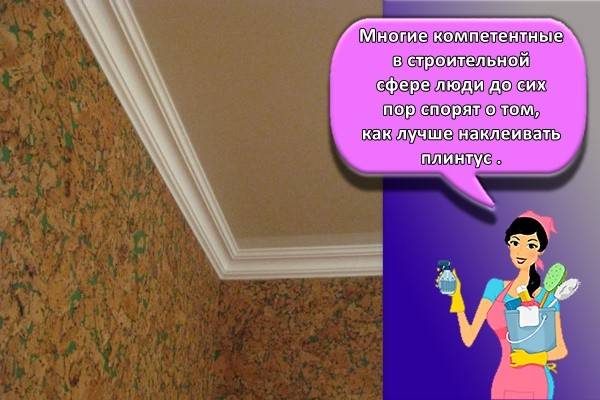
The choice of adhesive
When choosing an adhesive, it is necessary to take into account the material for the manufacture of the baseboard and the features of the room being repaired.
For those who do not want to bother buying glue, we advise you to pay attention to the following products:
- Moment;
- liquid Nails;
- Adefix;
Moment
An adhesive that is in great demand among buyers due to its versatility and practicality. Advantages:
- Suitable for most building materials used in renovation.
- Locks the part securely.
- Dries quickly.
Liquid Nails
The best choice for heavy fillet models that require the glue to be more secure in fixing. The glue does not break down under the influence of water, which allows it to be used in rooms with high humidity levels.
Adefix
Acrylic based adhesive suitable for use with skirting boards made of:
- polyurethane;
- foam;
- extruded polystyrene.
After hardening, the glue does not lose its elasticity, which significantly expands the scope of its application.
Instrument preparation
Correct, early preparation of tools speeds up and simplifies any repair work. To glue the ceiling plinth after finishing finishing you will need:
- ladder;
- stationery knife;
- ruler or tape measure;
- hand saw;
- a tray for cutting profile lumber;
- clean rag;
- pencil.
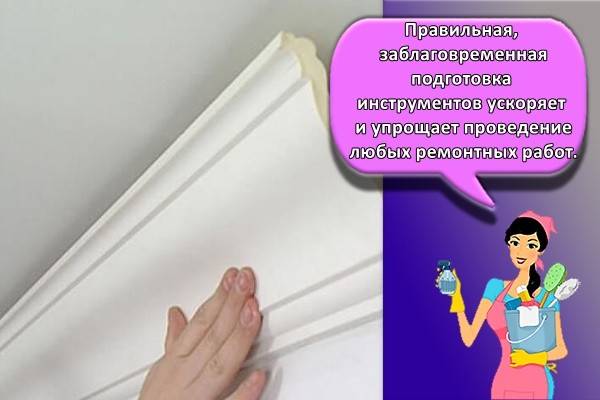
Performing markup
The markup is carried out using a pencil and tape measure, with the following notes:
- the lower edge of the location of the ceiling plinth;
- joints.
Glue application
The glue is applied to the back of the fillet, after which it is necessary to give it a few seconds for the substance to begin to set.
Cutting is done using a saw and a profile cutting tray. It has standard slots at different angles to make marking and trimming much easier.
Instructions for gluing skirting boards on a stretch ceiling
In order to correctly carry out the work, find out, glue the ceiling plinth to the stretch ceiling with your own hands, while maintaining the PVC film, you need to know the features and nuances of such a process. The correct choice of the adhesive base and the gluing itself become important.
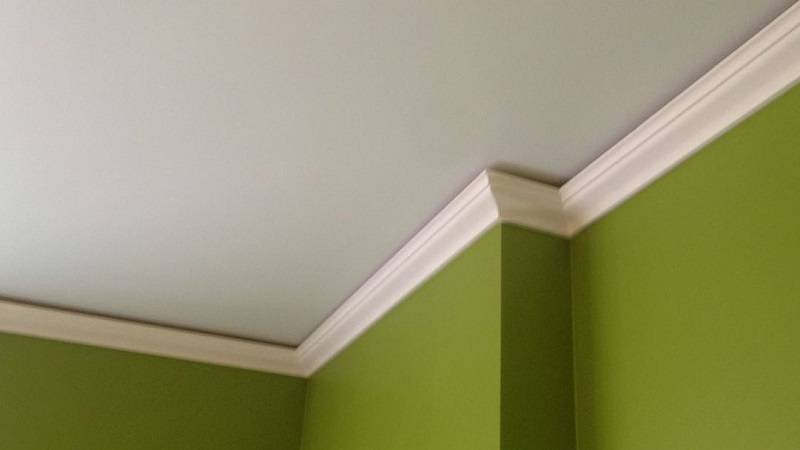 Not all types of skirting boards are suitable for stretch ceilings
Not all types of skirting boards are suitable for stretch ceilings
We prepare materials and tools
Prepare the following to install the molding:
- step ladder (can be replaced with a stable, reliable table);
- pencil and tape measure;
- chopping (painting) cord for drawing straight marking lines;
- stationery sharp knife;
- miter box - this tool will help you accurately trim the plinth for corners;
- spatula or gun, depending on the type of glue used;
- a spatula (rubberized or made of soft plastic), it removes the remnants of the mixture and putty the joints;
- brush if additional painting of the baseboards is planned;
- glue mass;
- putty or sealant for final decorative work (masking cracks / joints before painting);
- film to protect PVC cloths.
In order to prevent surplus of the purchased material, it is worth finding out the rules for calculating the consumption of the plinth. To do this, calculate the perimeter of the room using the formula P = 2x (a + b), where “a” is the length of the room, and “b” is its width. To the resulting number, add 15–20 cm (for each corner). Divide the resulting amount by the length of the plinth (in the classical form, it is equal to 2 m). Add 2-3 more baguettes to the final result (in case of emergency).
Choosing glue
In order to properly glue baguettes to a stretch ceiling, masters recommend using various adhesive modifications. The most common and proven ones are:
 For work, you need to choose high-quality glue
For work, you need to choose high-quality glue
Adhesive mass for skirting boards can be prepared by yourself. For this, PVA glue and putty are mixed at the rate of 4 parts of putty 1 part of glue. Water is carefully added to the mass with constant stirring. As soon as the substance acquires the consistency of sour cream, it is left for 10-15 minutes, and then they begin to work.
Surface preparation
To provide the working surface with a reliable hitch and long-term fixation, it should be prepared. Preliminary work consists of cleaning the surface and priming. For priming, it is better to use a primer or an aqueous solution of latex at the rate of 1x5, where 5 parts are latex. All subsequent work on pasting is carried out only after the primed surface has completely dried. When working, it is worth considering the following nuances:
- it is better to glue the wallpaper after installing the moldings to improve their adhesion to the walls and ease the subsequent dismantling of the wallpaper itself;
- if there is already wallpaper, then when masking the gaps between the walls and the PVC film, use lightweight foam baguettes;
- work especially delicately, try not to stain the stretch ceiling with the adhesive base;
- excess glue mass is removed immediately with a soft cloth or paper towels;
- if it is planned to paint the baguette, then the initial layer of paint is applied before the installation of the structure.
Marking and working with glue
The prepared material is applied in such a way that the surface edge of the element is close to the ceiling. The bottom edge of the baguettes is fixed with a basting in the corners of the room. To carry out the marking, you can use a small piece of plinth of 20-25 cm. After that, all these basting lines are connected with a chopping tape and marks are marked along the perimeter of the entire room.
The process of sticking itself begins from the corners of the premises. An even layer of glue is applied to the baguette and evenly distributed over the entire seamy side. Then the plinth is firmly pressed against the wall along its length. Glue residues are removed. The rest of the pasting of the elements takes place in the same way.
How to join moldings in corners
Corner joints are made at an angle of 45⁰. A miter box is used for precise and even trimming of baguettes. And the baguettes themselves are quickly cut with a knife. It is better not to use a hacksaw - the foam begins to crumble and form curved barbs. In case of corner joining of the baguette, the glue mass is also applied to the area of the fasteners-joints.
We rub the seams
It is better to mask all the resulting gaps in the places where the skirting boards are glued with a sealant. When using putty, knocks are closed immediately, when pasting. And in order to get rid of possible gaps at the junction of the baguette and PVC sheets, when gluing the skirting board, slightly press the baguette up. The foil will rise slightly and fit carefully onto the baseboard.


